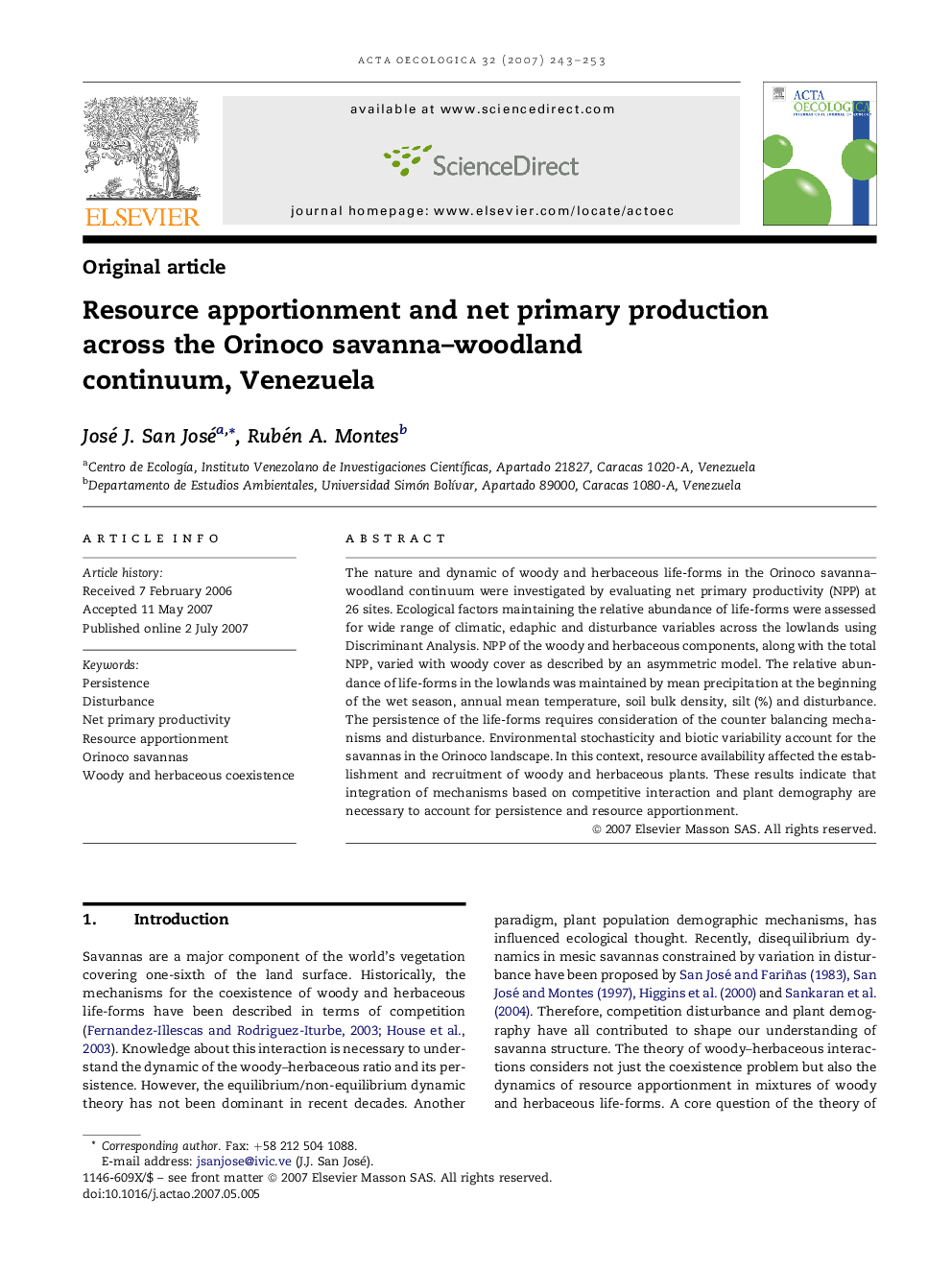| Article ID | Journal | Published Year | Pages | File Type |
|---|---|---|---|---|
| 4381544 | Acta Oecologica | 2007 | 11 Pages |
Abstract
The nature and dynamic of woody and herbaceous life-forms in the Orinoco savanna-woodland continuum were investigated by evaluating net primary productivity (NPP) at 26 sites. Ecological factors maintaining the relative abundance of life-forms were assessed for wide range of climatic, edaphic and disturbance variables across the lowlands using Discriminant Analysis. NPP of the woody and herbaceous components, along with the total NPP, varied with woody cover as described by an asymmetric model. The relative abundance of life-forms in the lowlands was maintained by mean precipitation at the beginning of the wet season, annual mean temperature, soil bulk density, silt (%) and disturbance. The persistence of the life-forms requires consideration of the counter balancing mechanisms and disturbance. Environmental stochasticity and biotic variability account for the savannas in the Orinoco landscape. In this context, resource availability affected the establishment and recruitment of woody and herbaceous plants. These results indicate that integration of mechanisms based on competitive interaction and plant demography are necessary to account for persistence and resource apportionment.
Related Topics
Life Sciences
Agricultural and Biological Sciences
Ecology, Evolution, Behavior and Systematics
Authors
José J. San José, Rubén A. Montes,
